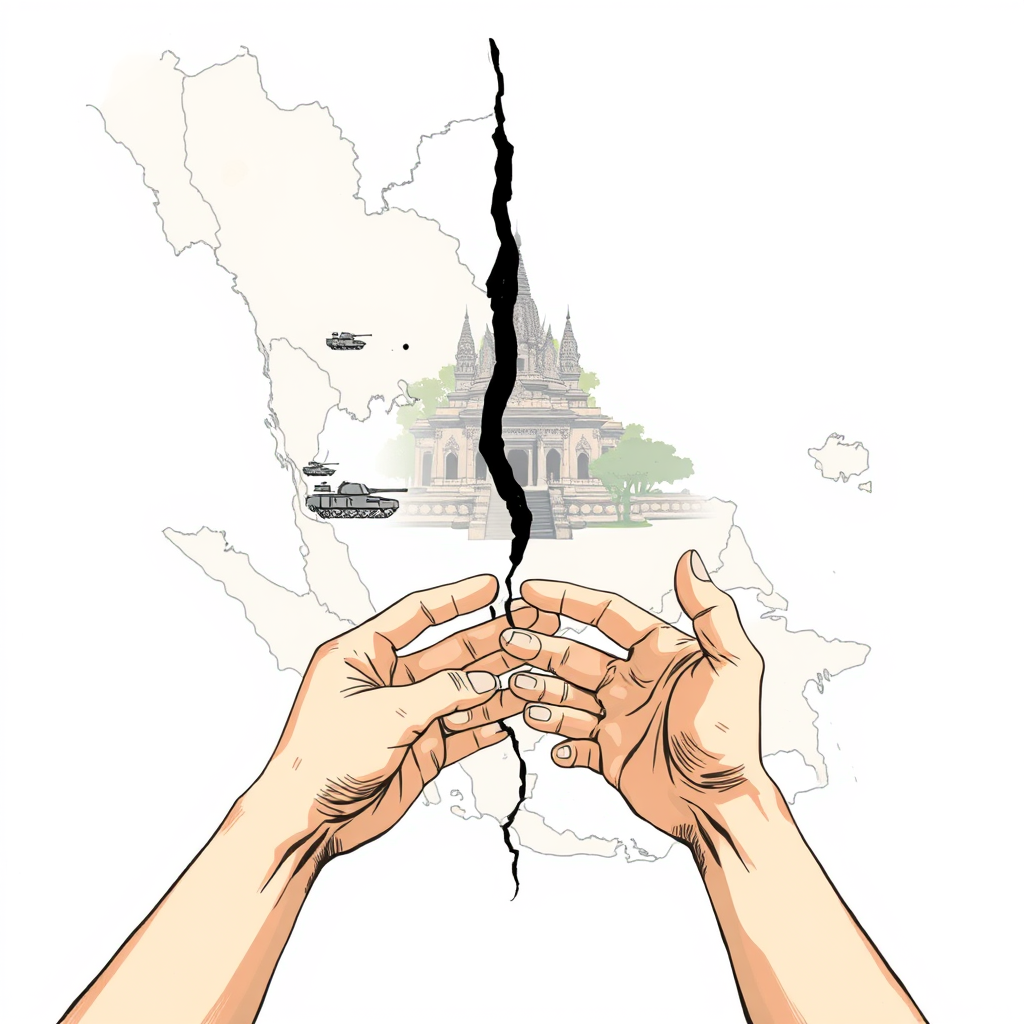Thailand Cambodia Border Clash Threatens Regional Stability

A long-standing friendship between Thailand and Cambodia is fracturing, escalating into a dangerous border dispute with potential regional consequences. Once lauded as exemplars of Southeast Asian camaraderie, the two nations are now locked in a tense standoff sparked by a deadly clash last month, threatening to unravel years of diplomatic progress.
The immediate trigger was a firefight on May 28th in the contested Emerald Triangle – a region bordering Thailand, Cambodia, and Laos – resulting in the death of a Cambodian soldier. Both sides accuse the other of initiating the violence, with Cambodia alleging Thai troops opened fire on a Cambodian base, while Thailand claims its soldiers responded to aggression. The incident has unleashed a wave of nationalistic fervor and retaliatory measures.
Hun Sen, despite relinquishing the premiership to his son, Hun Manet, remains a powerful figure as Senate President and has vocally supported a strong response, even suggesting preparations for a counterattack. He framed the situation as a matter of defending against foreign aggression. While both nations are members of ASEAN and theoretically committed to peaceful dispute resolution, initial attempts at de-escalation – a pullback of troops to previously agreed-upon positions – quickly gave way to punitive actions.
Bangkok threatened to cut electricity and internet access to Cambodia, prompting a reciprocal ban on Thai media and cross-border internet links from Phnom Penh. Cambodia further escalated the situation by banning Thai produce and barring Thais from working in Cambodian casinos. Adding another layer of complexity, Cambodia has appealed to the International Court of Justice (ICJ) for a resolution, a move Thailand rejects, preferring bilateral talks.
The roots of this dispute are deeply embedded in history. The current border largely reflects a demarcation established by French colonial powers in the early 20th century, based on natural watershed lines. However, Thailand has long contested this map, particularly regarding the location of the 11th-century Preah Vihear Temple, which the ICJ ruled in 1962 falls within Cambodian territory. While Thailand acknowledged the ruling at the time, disagreements over the surrounding border areas persisted, leading to clashes in 2008 and escalating tensions in 2011, displacing tens of thousands.
The situation is further complicated by the familial ties between the current leaders. Thai Prime Minister Paetongtarn Shinawatra is the daughter of former Prime Minister Thaksin Shinawatra, who enjoys a close friendship with Hun Sen, and has been provided refuge in Cambodia. This relationship has raised concerns in Thailand about Paetongtarn’s willingness to firmly defend national interests. She has publicly stated that friendship will not supersede protecting Thailand’s sovereignty, but faces pressure from within the Thai military, which appears ready to take a hard line.
The potential for escalation is significant. The Thai military’s readiness for “high-level operation” suggests a willingness to use force, potentially fueled by nationalist sentiment. Some analysts fear a repeat of past patterns, where the military exploits border disputes to justify a coup.
While Paetongtarn has called for a peaceful resolution, she is walking a tightrope between diplomacy and domestic political pressures. The situation demands careful handling from both sides. A swift and constructive dialogue, potentially facilitated by ASEAN, is crucial to prevent further escalation and preserve the long-standing, albeit currently strained, relationship between Thailand and Cambodia. The current trajectory is deeply concerning, and a return to mutual trust and cooperation is essential for regional stability.